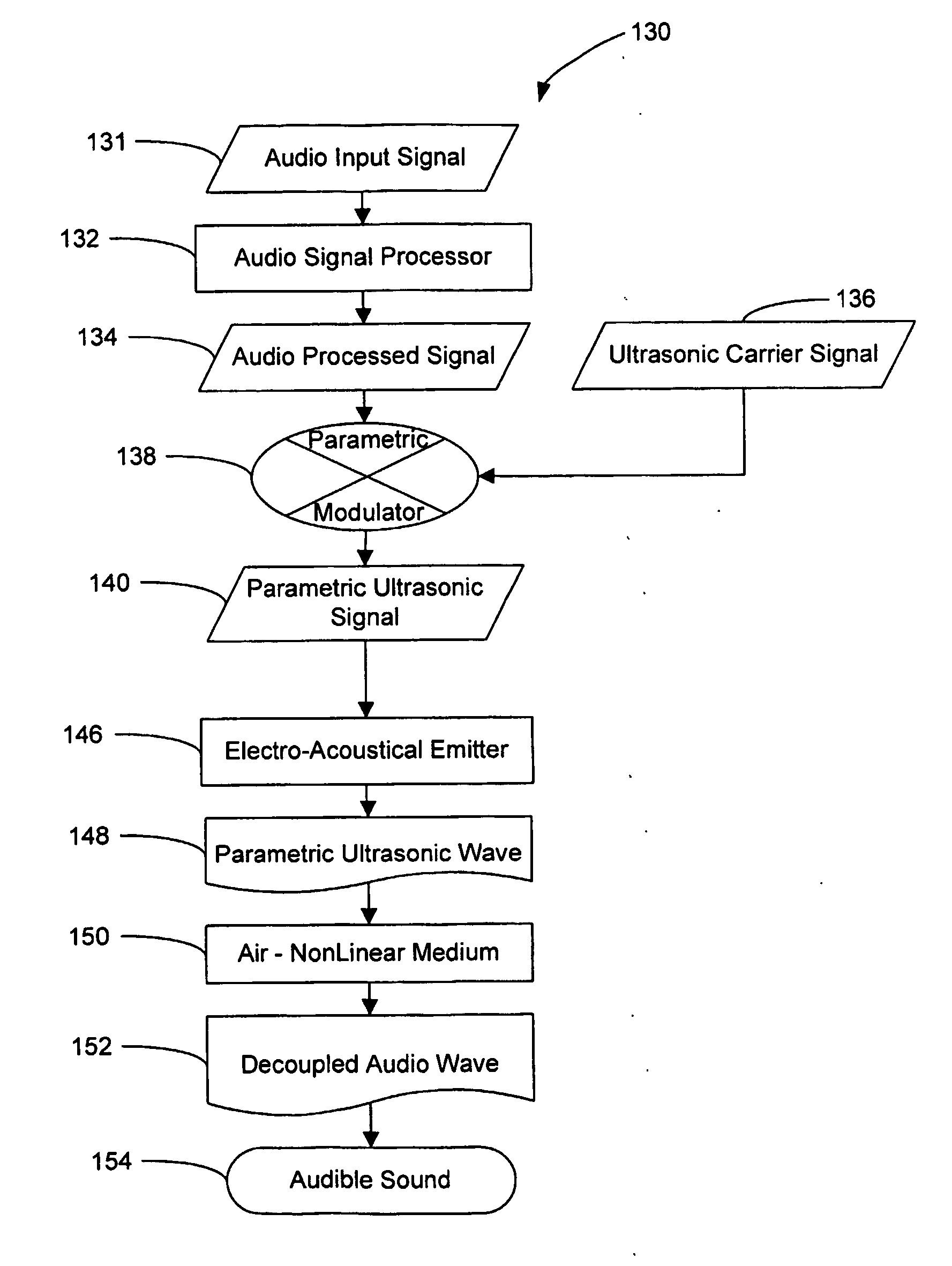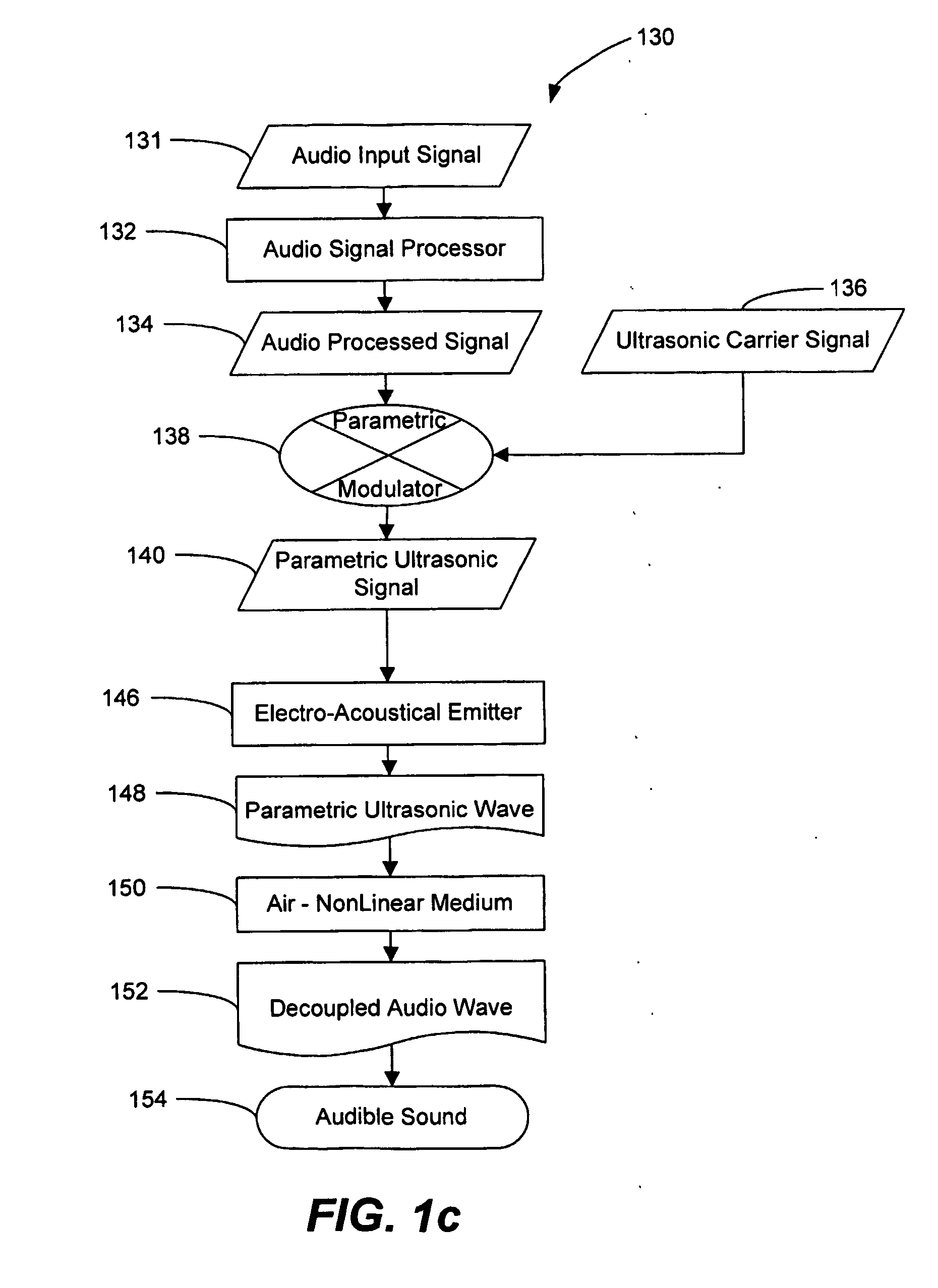Parametric Loudspeaker System And Method For Enabling Isolated Listening To Audio Material
a loudspeaker and parametric technology, applied in the field of parametric loudspeakers, can solve the problems of poor matching of resonant frequencies of emitters with sound output, limited popularity of the devices, and general limitations in the state of the art of sound reproduction
- Summary
- Abstract
- Description
- Claims
- Application Information
AI Technical Summary
Benefits of technology
Problems solved by technology
Method used
Image
Examples
Embodiment Construction
[0048] Reference will now be made to the exemplary embodiments illustrated in the drawings, and specific language will be used herein to describe the same. It will nevertheless be understood that no limitation of the scope of the invention is thereby intended. Alterations and further modifications of the inventive features illustrated herein, and additional applications of the principles of the inventions as illustrated herein, which would occur to one skilled in the relevant art and having possession of this disclosure, are to be considered within the scope of the invention.
[0049] Because parametric sound is a relatively new and developing field, and in order to identify the distinctions between parametric sound and conventional audio systems, the following definitions, along with the explanatory diagrams of FIGS. 1a, 1b and 1c are provided. While the following definitions may also be employed in future applications from the present inventor, the definitions are not meant to retro...
PUM
 Login to View More
Login to View More Abstract
Description
Claims
Application Information
 Login to View More
Login to View More - R&D
- Intellectual Property
- Life Sciences
- Materials
- Tech Scout
- Unparalleled Data Quality
- Higher Quality Content
- 60% Fewer Hallucinations
Browse by: Latest US Patents, China's latest patents, Technical Efficacy Thesaurus, Application Domain, Technology Topic, Popular Technical Reports.
© 2025 PatSnap. All rights reserved.Legal|Privacy policy|Modern Slavery Act Transparency Statement|Sitemap|About US| Contact US: help@patsnap.com



